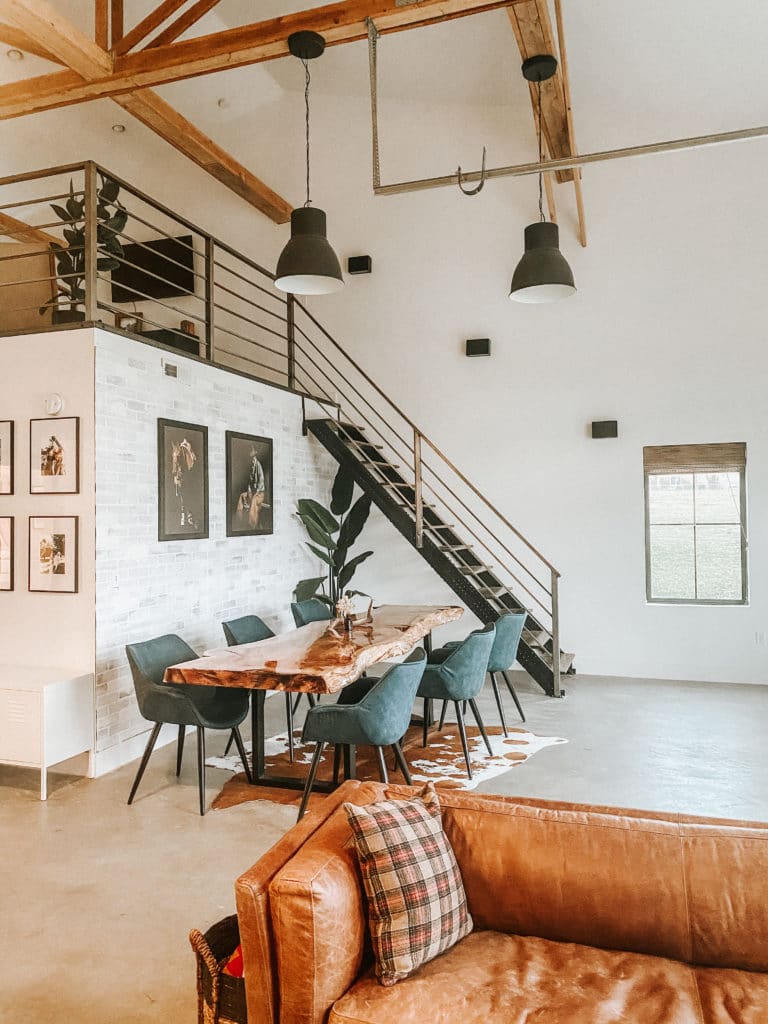Barndominiums Vs. Conventional Residences: a Comprehensive Comparison of Way Of Life and Functionality
The decision between barndominiums and standard homes includes different variables, including way of life choices and functional demands. Barndominiums are characterized by their open designs and adaptability, usually interesting those that focus on common living and versatility. In comparison, typical homes offer an even more organized environment, which may much better serve family members seeking personal privacy and a sense of history. As we check out the expense effects and ecological factors to consider, it comes to be clear that the option extends beyond plain aesthetics and capability; it welcomes a much deeper expedition of what really defines a home.
Review of Barndominiums
Barndominiums, an unique housing pattern acquiring popularity throughout different areas, mix the rustic charm of barn-style design with the performance of modern space. These one-of-a-kind frameworks normally consist of a metal or timber framework, integrating open flooring strategies and high ceilings with energy-efficient features. Frequently situated on large rural properties, barndominiums offer house owners the possibility to delight in a tranquil way of living while offering adequate room for different tasks.
The flexibility of barndominiums extends beyond their visual appeal; they can serve as both living quarters and practical spaces for hobbies, workshops, or even local business. Their flexible layout permits simple modification, accommodating varied household requirements and choices. Numerous proprietors appreciate the low maintenance demands related to steel house siding and roofing, contributing to long-term longevity.

Features of Conventional Homes
Stressing classic style and convenience, conventional homes are defined by their unique building styles, which usually mirror historic impacts and local visual appeals. Usual functions consist of balanced exteriors, gabled roofings, and an emphasis on craftsmanship, causing a warm and welcoming ambience.
Standard homes frequently incorporate components such as crown molding, wainscoting, and wood floor covering, enhancing their classic appeal. They usually include several areas with defined functions, promoting household interaction while enabling personal privacy. see website. The layout frequently consists of formal living and dining areas, which contribute to amusing guests and hosting family gatherings
Exterior products such as brick, timber, or stone are regularly used, adding to longevity and a feeling of permanence. Barndominium builder. Furthermore, numerous standard homes are designed with front decks or stoops, fostering a feeling of community and connection with the area
Landscaping plays a significant function in traditional the original source home design, with well-maintained gardens and pathways that boost curb allure - click here. In general, standard homes embody a feeling of nostalgia and stability, appealing to those that value heritage and a more structured living atmosphere
Cost Comparison
Normally, an expense comparison between barndominiums and standard homes discloses substantial differences in building and construction expenditures and overall financial investment. Barndominiums, often created from steel or steel frames, usually sustain reduced product and labor costs than standard homes developed from wood and block. The streamlined layout of barndominiums can convert to lowered building times, further decreasing labor prices and accelerating tenancy.
On standard, the cost per square foot for a barndominium varies from $100 to $150, while typical homes can vary extensively, typically falling between $150 and $300 per square foot, relying on location, materials, and design complexity. This cost difference makes barndominiums an attractive alternative for budget-conscious buyers seeking larger living rooms without compromising top quality.
In addition, barndominiums may result in long-term financial savings via reduced upkeep prices, energy efficiency, and insurance policy rates. Their long lasting building products commonly call for much less maintenance over time contrasted to typical homes. Nonetheless, it is vital to take into consideration that while first costs may be reduced for barndominiums, the last investment will likewise depend upon specific personalization and desired amenities, which can influence the overall expense in both real estate kinds.
Way Of Life and Space Factors To Consider
When taking into consideration way of living and area, barndominiums provide a distinct flexibility that attract a selection of house owners. These hybrid frameworks incorporate property living with useful area, frequently including open layout that can be adapted to fit specific requirements. This flexibility is especially advantageous for families or individuals seeking a personalized living setting, enabling for varied usages such as office, workshops, or entertainment locations.
Moreover, the visual allure of barndominiums can deal with both rustic and contemporary tastes, making them a flexible choice for numerous style preferences (Barndominium builder). Inevitably, the option between a barndominium and a traditional home usually hinges on exactly how well each choice lines up with the homeowner's way of life desires and spatial needs, highlighting the significance of taking into consideration personal priorities in the decision-making process
Ecological Impact and Sustainability
The environmental effect and sustainability of barndominiums existing engaging advantages compared to standard homes. Mainly constructed from steel and other durable materials, barndominiums are commonly developed making use of recycled sources, minimizing the need for brand-new materials and reducing waste. Their layout generally emphasizes open areas, which can bring about lower energy consumption for heating & cooling contrasted to typical homes with more segmented layouts.
Moreover, barndominiums can integrate lasting features such as solar panels, rain harvesting systems, and advanced insulation strategies, boosting their power efficiency. The flexibility of their layout enables home owners to incorporate these modern technologies extra effortlessly than in lots of traditional homes, which may call for comprehensive retrofitting.
In addition, barndominiums typically call for fewer resources for building and construction due to their simpler, much more reliable styles (view now). Overall, barndominiums stand for a forward-thinking approach to lasting living, straightening with modern environmental priorities.
Final Thought
In summary, the choice in between barndominiums and typical homes pivots on private lifestyle preferences and practical requirements. Barndominiums, with their open formats and lasting products, deal with those seeking adaptability and communal living. Alternatively, typical homes supply defined rooms that boost privacy and promote historical aesthetic appeals. Each alternative presents distinct benefits, requiring mindful consideration of one's worths and needs when figuring out one of the most appropriate living environment.